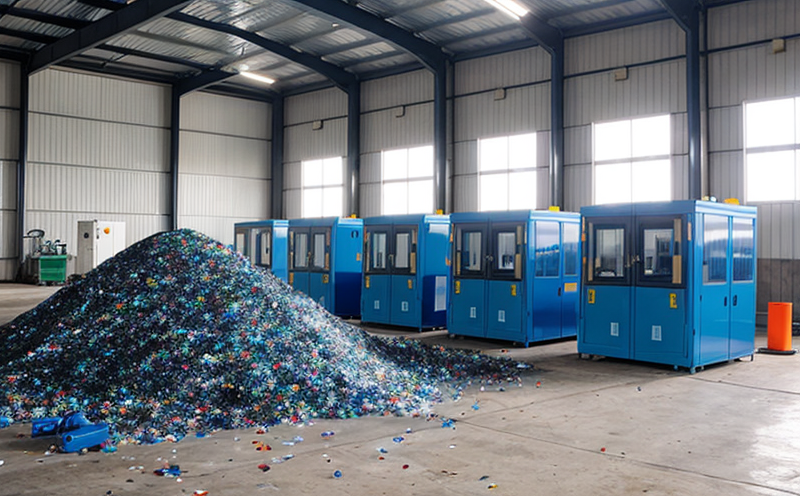EN 15358 Plastics Sorting Performance Evaluation
The EN 15358 standard provides a framework for evaluating the performance of plastic sorting systems. This method is crucial for ensuring that recycling processes are efficient and effective, thereby minimizing environmental impact and maximizing resource recovery.
Sorting efficiency in plastics recycling is vital as it directly impacts the quality of recycled products. Improper sorting can lead to contamination, reducing the value of recyclates. This standard helps facilities assess their systems' ability to accurately sort various types of plastic waste. By doing so, it supports sustainability goals and enhances the circular economy.
EN 15358 is designed for use with a wide range of sorting technologies including optical sorters, near-infrared (NIR) scanners, and conveyor-based systems. It specifies criteria for evaluating how well these technologies can separate different polymers based on their physical properties such as density, refractive index, and infrared absorption.
The test involves preparing a mixture of mixed plastics that represent the typical composition found in municipal solid waste streams. These samples are then fed into the sorting system under controlled conditions. The output from the sorter is analyzed to determine its accuracy in separating different polymer types. Key performance indicators include purity, completeness, and balance.
Purity refers to the proportion of correct classifications (i.e., polymers being placed in their respective bins). Completeness measures whether all expected fractions are present after sorting. Balance ensures that no single fraction is overrepresented or underrepresented compared to its theoretical distribution.
For accurate results, proper specimen preparation is essential. This includes ensuring uniform particle sizes and consistent moisture content across the sample set. Preparing representative samples that mimic real-world conditions allows for realistic assessments of sorting performance.
The testing protocol outlined in EN 15358 requires rigorous calibration procedures to minimize variability between tests. Regular maintenance and calibration of equipment ensure consistent results over time. Compliance with this standard helps operators identify areas where improvements can be made, leading to more efficient operations overall.
- Calibration of optical sorters using known reference materials
- Consistent environmental conditions during testing (temperature, humidity)
- Uniform particle size distribution in test samples
- Regular calibration of conveyor systems to maintain proper speed and alignment
Applied Standards
The primary standard used for evaluating plastic sorting performance is EN 15358: Sorting performance evaluation of plastics recycling systems. This European Norm specifies methods for assessing how well different types of equipment can separate various polymer grades within a mixture of waste plastics.
Other relevant international standards include ISO 9001 for quality management systems and ISO 14001 for environmental management systems, which provide frameworks for ensuring robust processes supporting compliance with EN 15358. Additionally, ASTM D7613-12 provides supplementary guidance on sampling techniques that can complement the evaluation process.
Adherence to these standards ensures consistent and reliable results across different facilities worldwide, fostering trust among stakeholders involved in plastics recycling initiatives.
Industry Applications
The application of EN 15358 is particularly relevant for waste management companies looking to improve their sorting capabilities. By implementing this standard, they can enhance the quality of recycled materials produced from sorted waste streams.
R&D engineers benefit significantly by using EN 15358 as a benchmark against which new technologies and processes are evaluated. This allows them to innovate more effectively while maintaining high standards of performance.
Compliance officers play a critical role in ensuring that their organizations meet regulatory requirements related to waste management practices. Adherence to EN 15358 demonstrates commitment to best practices, helping businesses stay ahead of changing environmental regulations and public expectations regarding sustainability.
For procurement teams, choosing suppliers who adhere to this standard ensures consistency in the quality of sorting equipment acquired for use within their operations. This contributes positively towards achieving corporate sustainability goals set forth by top management.
Quality and Reliability Assurance
- Regular calibration of optical sorters to maintain accuracy
- Consistent environmental conditions during testing (temperature, humidity)
- Uniform particle size distribution in test samples
- Regular maintenance and alignment checks for conveyor systems
- Use of known reference materials for calibrating optical sorters
- Implementation of quality control measures to ensure consistency between tests





